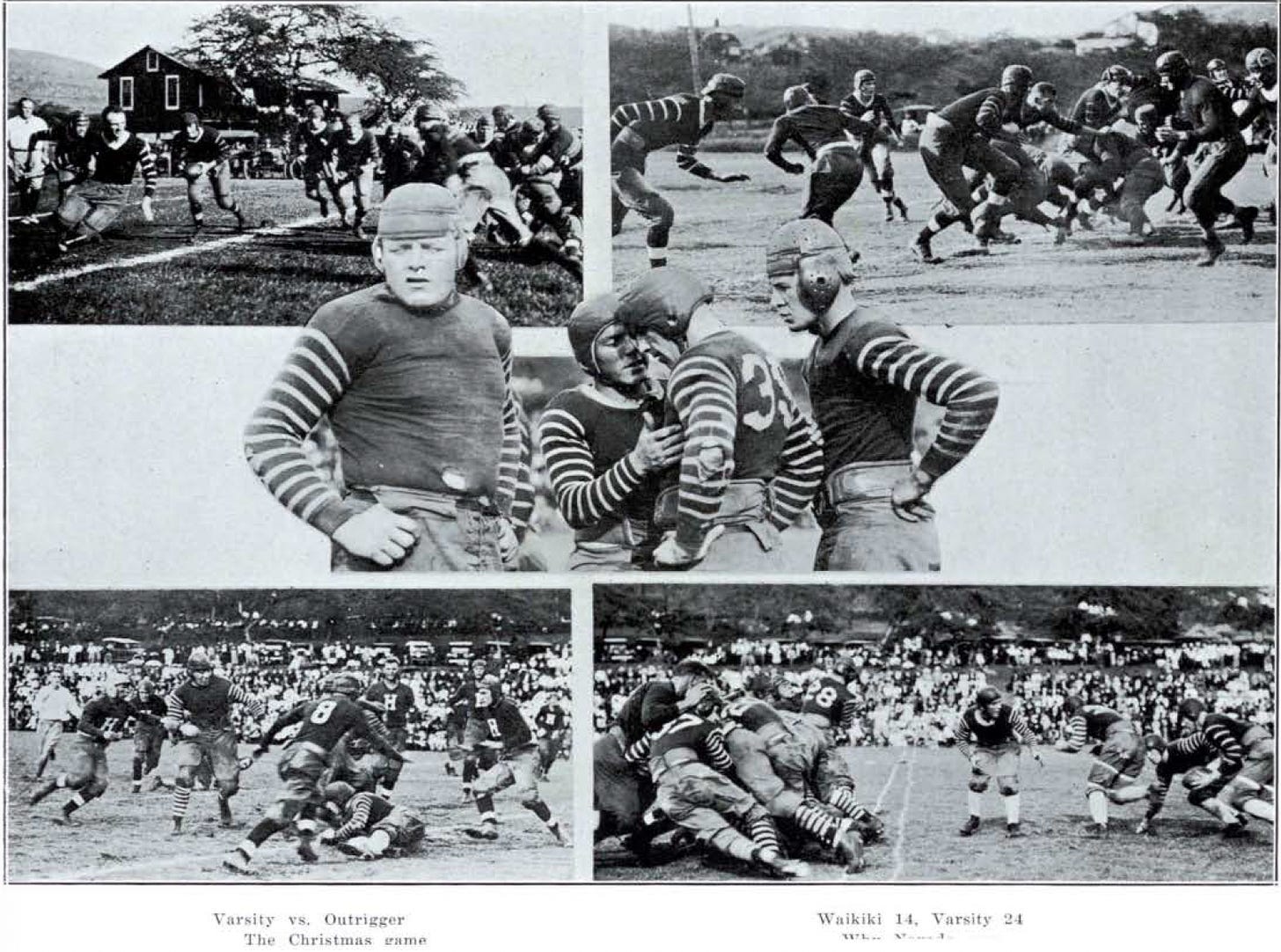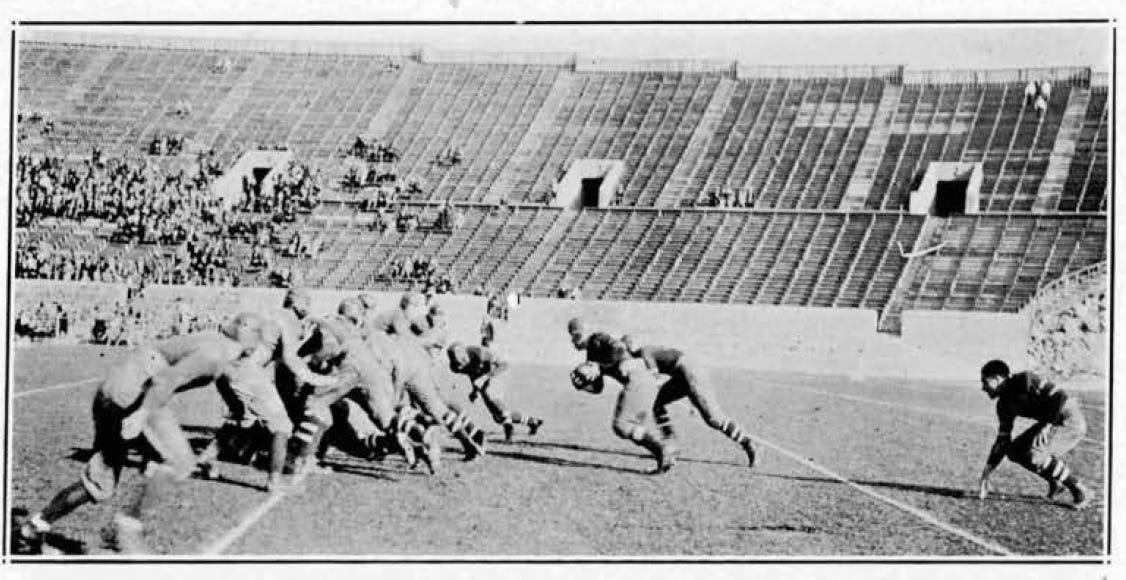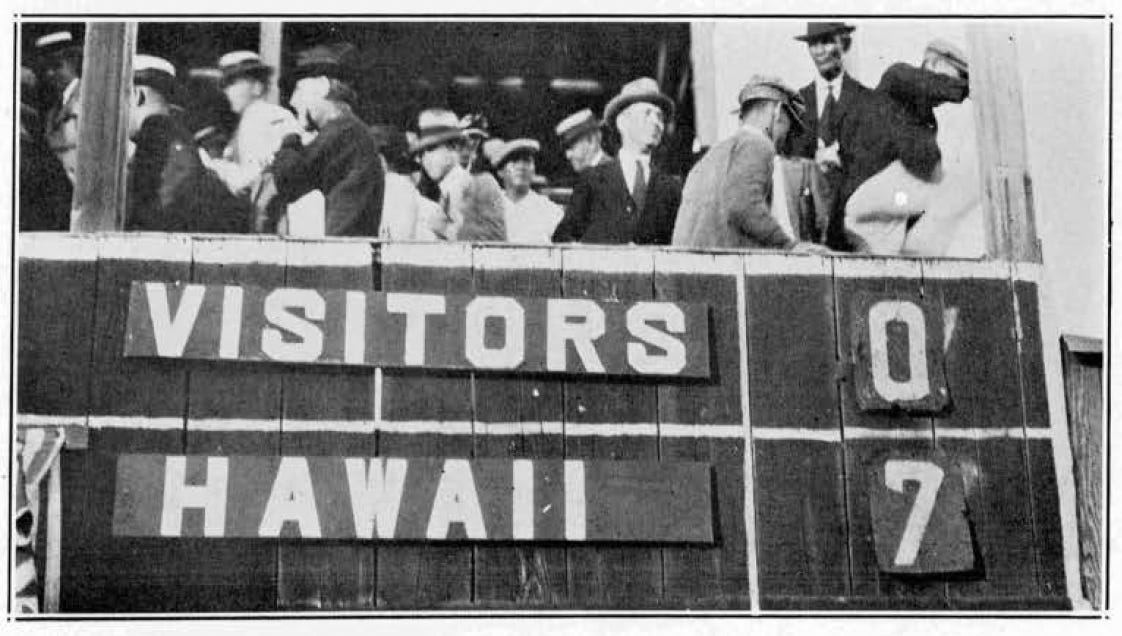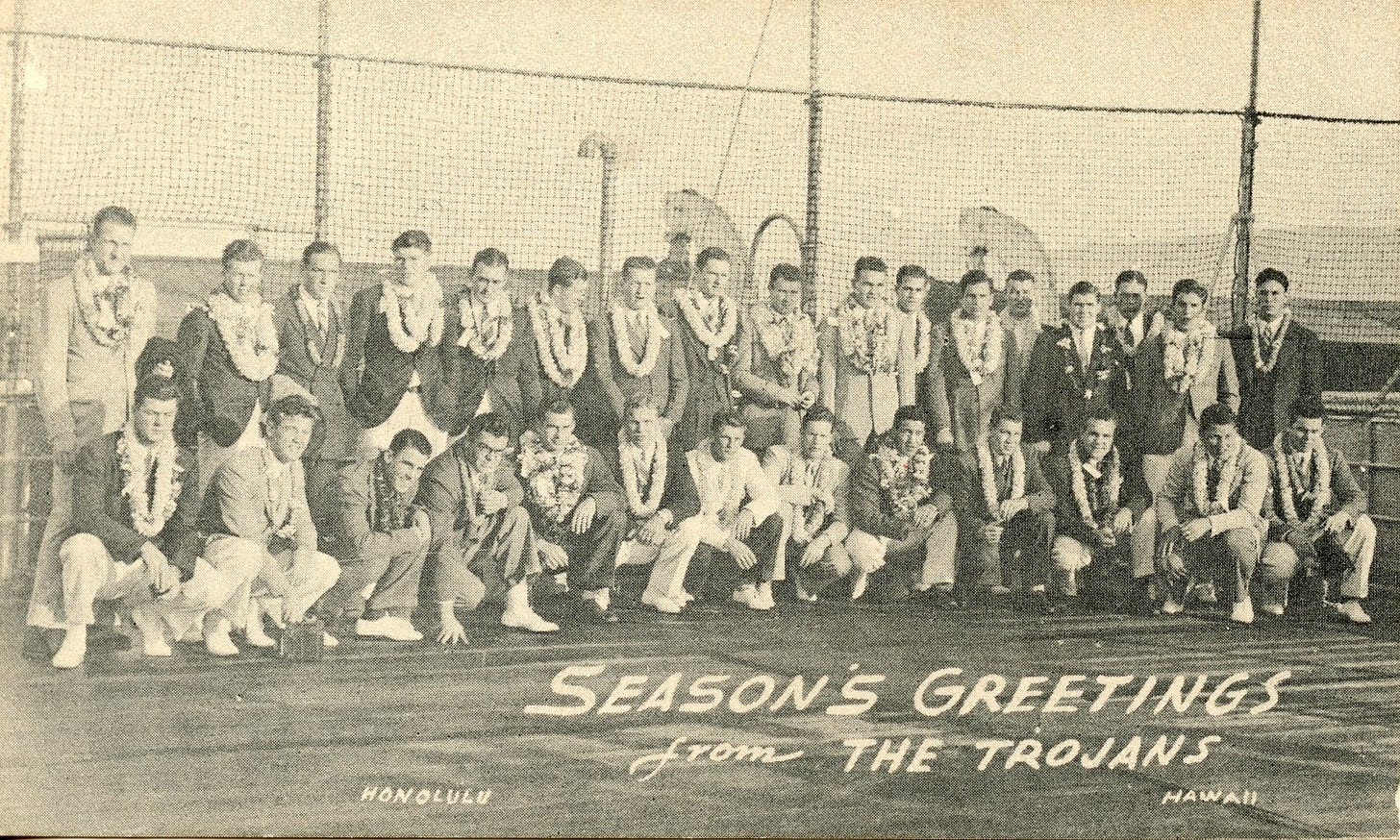Today’s Tidbit… Christmas Football In Hawaii
Los Angeles is closer to New York than Honolulu and, since 1885, has been better connected by railroad, and Hawaii’s isolation significantly affected its football. The University of Hawaii first played football in 1909, and since it was the only football-playing college on the islands, its first intercollegiate game did not come until 1920, and its first game on the mainland did not come until 1923. Instead, the University played local clubs, town teams, and teams from the military bases or ships in port.
The first intercollegiate game occurred when they arranged for Nevada to visit the Islands for games on Christmas Day, 1920, and New Year’s Day, 1921. Nevada’s visit started a trend in which a mainland team from the western states visited Hawaii over Christmas break to play one game versus a top Hawaiian club or all-star team and another game versus the University. Often, the first game came on Christmas Day and the second on New Year’s Day.
For the 1920 version, the local fans were so interested in seeing a mainland team that they flocked to Nevada’s practices to compare notes. When game time came, Hawaii played well in a 14-0 loss that showed they could play with mainland college teams. The Nevada games started the annual tradition that saw Oregon visit in 1921 and Pomona in 1922.
In 1923, Hawaii sailed east, landing at the Port of Los Angeles for a Thanksgiving Day game with Pomona College in the new Rose Bowl Stadium. Despite the 14-7 loss, the 1923 resurrected their season when Oregon State visited for the holidays, and the Rainbows broke the Beaver’s dam to win 7-0, Hawaii’s first win over a mainland team.
Knute Rockne tried convincing Notre Dame’s faculty of the educational benefits of playing in Hawaii after the 1927 season. However, the faculty thought playing at Southern Cal every other year was enough long-distance travel for the rambling Irish, so they never made it to the Islands. Still, over the next 15-plus years, Colorado, Washington State, Utah State, Cal, USC, UCLA, and others saw the benefits of sailing the high seas to play a game or two in Honolulu.
The most interesting actual and planned visits by mainland teams likely came in 1941. Willamette and San Jose State sailed to Hawaii in early December to play one another and Hawaii. Willamette lost to Hawaii 20-6 on December 6, and team members were sleeping on the morning of December 7 when the Japanese Navy attacked Pearl Harbor. Both teams eventually made it home. Meanwhile, Nevada and Utah had plans for a similar three-way series with Hawaii over the Christmas break, but those games were soon canceled.
Advances in aviation during the war meant that commercial and charter flights between the mainland and Hawaii soon replaced ocean liners for team travel, allowing Hawaii to travel more quickly for away games while allowing visiting teams to do the same. While games in Hawaii still require long flights, and there are innumerable bowl games nowadays, one can only hope a football team arranges a nostalgic Hawaiian series and travels there and back by ship.
Football Archaeology is reader-supported. Click here to buy one of my books or otherwise support the site.







Great research and coverage of these all but forgotten "road" trips. Rumor has it that the author was wearing a very similar outfit as in the first photo at the Football Archaeology Christmas party.
Actually, I was wearing skintight grass yoga pants to add some spice to the holiday season.